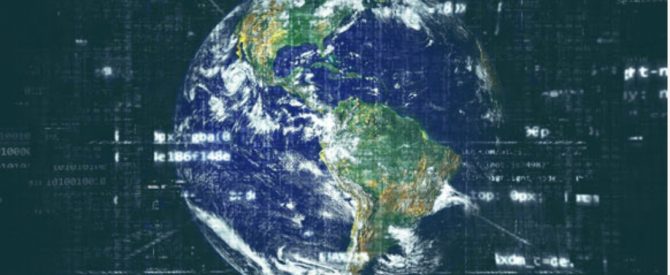Melvin Vopson, a physicist with the School of Mathematics and Physics at the University of Portsmouth, has already published research suggesting that information has physical mass and that all elementary particles store information about themselves. Now, the researcher has designed an experiment — which if proved correct — means he will have discovered that information is the fifth form of matter, alongside solid, liquid, gas, and plasma
.
The mass-energy-information equivalence principle proposed in 2019 and the information content of the observable matter in the Universe estimated in 2021 represent two important conjectures, called the information conjectures. Combining information theory and physical principles of thermodynamics, these theoretical proposals made specific predictions about the mass of information as well as the most probable information content per elementary particle. Dr. Vopson proposes an experimental protocol that allows for empirical verification of the information conjectures by confirming the predicted information content of elementary particles. Image credit: Pete Linforth.
Since IBM’s development of the first magnetic hard disk drive in 1956, digital information storage technologies have radically transformed our modern society.
In binary code, digital information is stored as logical 1s and 0s, known as bits. Bits of information can be stored in any material capable of displaying two distinctive and switchable physical states (magnetic, electric, optical, and resistive) by allocating a logical 0 or 1 to each physical state.
Digital information became so entrenched in all aspects of our society that the recent growth in information production appears to be unstoppable.
Each day on Earth we generate 500*106 tweets, 294*109 emails, 4*106 gigabytes of Facebook data, 65*109 WhatsApp messages, and 720,000 hours of new content added daily on YouTube.
In 2018, the total amount of data created, captured, copied, and consumed in the world was 33 zettabytes (ZB) or the equivalent of 264*1021 bits, where 1 ZB is 8*1021 bits. This grew to 59 ZB in 2020 and is predicted to reach a 175 ZB by 2025.
In 2019 and 2021, Dr. Vopson proposed two important conjectures: (a) the mass-energy-information equivalence principle, stating that information transcends into mass or energy depending on its physical state; and (b) the existence of intrinsic information underpinning the fundamental characteristics of elementary particles in the Universe, implying that stable, non-zero rest mass elementary particles store a fixed and quantifiable value of information about themselves.
These so-called information conjectures also imply that the information is a form of matter, called the fifth state of matter or the fifth element. In his new paper, published in the journal AIP Advances, Dr. Vopson proposes an experimental protocol that allows for empirical verification of these conjectures by confirming the predicted information content of elementary particles.
“If we assume that information is physical and has mass and that elementary particles have a DNA of information about themselves, how can we prove it?” he said.
“My latest paper is about putting these theories to the test so they can be taken seriously by the scientific community.”
Source: Sci-News.com, by News Staff/Source, March 21, 2022





